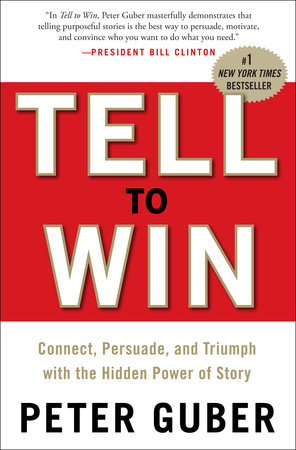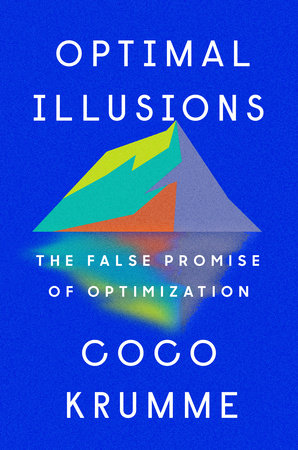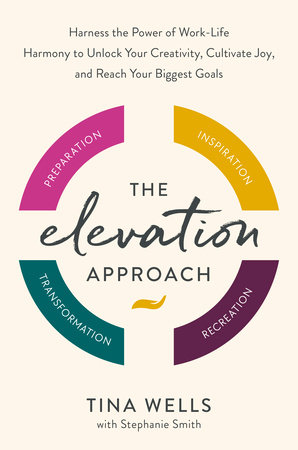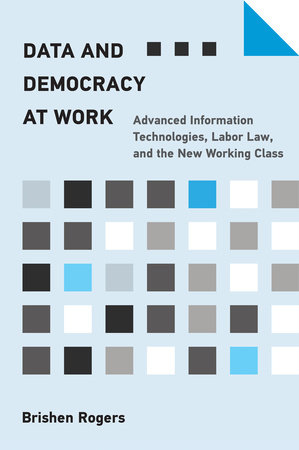Quick Summary
One Sentence Summary:
“Tell to Win” by Peter Guber is a compelling guide on how storytelling can be a powerful tool to persuade, motivate, and lead in business and life.
Big Idea:
The core premise of the book is that storytelling is not just for entertainment; it’s a crucial skill for success in business and personal life, capable of capturing attention, influencing decisions, and inspiring action.
Five Key Ideas:
- Emotional Connection: Stories create an emotional bridge, making messages memorable and impactful.
- Purposeful Narrative: Every successful story has a clear purpose, guiding the listener to a desired outcome.
- Authenticity: Genuine stories resonate more; authenticity is key to building trust and rapport.
- Engagement: Interactive storytelling engages listeners, turning passive audiences into active participants.
- Adaptability: Good storytellers adapt their narratives to different audiences and contexts.
Actionable Advice:
- Craft Your Story: Identify your core message and build a story around it.
- Be Authentic: Share personal experiences and genuine emotions.
- Know Your Audience: Tailor your story to resonate with your listeners’ values and needs.
- Practice: Like any skill, storytelling improves with practice. Refine your narrative and delivery.
- Listen and Adapt: Pay attention to feedback and be ready to adjust your story for better engagement.
About the Author:
Peter Guber is a renowned executive, entrepreneur, and author, with a prolific career spanning various industries including entertainment, sports, and media. His expertise in storytelling comes from decades of experience in engaging audiences and leading successful ventures.
Read Next:
- “Made to Stick” by Chip and Dan Heath, for insights into why some ideas thrive and others die.
- “Start with Why” by Simon Sinek, focusing on the importance of purpose in inspiring action.
- “The Storyteller’s Secret” by Carmine Gallo, exploring how great leaders use stories to inspire.
- “Influence: The Psychology of Persuasion” by Robert B. Cialdini, providing a deeper understanding of persuasion techniques.
In Depth
Emotional Connection
Stories forge emotional connections. They tap into our feelings, making messages stick. This is the heart of Guber’s argument. It’s not just about relaying facts; it’s about stirring emotions. When a story resonates emotionally, it becomes memorable and influential.
Consider a scenario from the book: Guber describes his experience with NBA’s Golden State Warriors. He needed to persuade city officials for a new arena. Instead of bombarding them with data, he shared a story. It was about a father and son at a basketball game, bonding over the sport. This narrative highlighted community and connection, not just profit. It struck an emotional chord, influencing the decision-makers.
Emotionally charged stories have power. They can change perspectives, inspire actions, and drive decisions. As Guber puts it:
“Emotion, combined with a compelling story, is a powerful catalyst for action.”
Guber stresses authenticity. People can sense when emotions are genuine. A story told from the heart, with real feelings, resonates more deeply. It builds trust and rapport.
Audiences remember how a story made them feel, not just the details. This emotional memory can shape their attitudes and choices long after the story is told. It’s why advertisements often use narratives. They aim to evoke emotions, hoping you’ll associate those feelings with their brand.
Guber also explores how emotional connection can foster loyalty and commitment. A leader who shares personal, emotionally charged stories can inspire their team. These narratives can foster a sense of shared mission and values. They can turn a group of individuals into a cohesive unit, working passionately towards a common goal.
Emotion in storytelling isn’t about manipulation. It’s about finding the human element in your message. It’s about making your audience care. When people care, they listen, they remember, and they act.
The emotional connection principle isn’t just for leaders or marketers. It’s universal. Whether you’re teaching, selling, or just sharing an idea, tapping into emotions can make your message more powerful. It can turn a simple story into a catalyst for change.
Purposeful Narrative
Every impactful story has a clear purpose. It guides the listener to a desired outcome. This isn’t just about entertaining; it’s strategic storytelling.
Guber illustrates this with an example from the music industry. He discusses how Michael Jackson’s “Thriller” wasn’t just a song or an album; it was a narrative experience. The purpose was to immerse listeners in a story, making them part of something bigger. It wasn’t just about listening; it was about experiencing. This purposeful narrative approach turned “Thriller” into a groundbreaking success.
Purposeful narratives are intentional. They have a clear goal, whether to persuade, inform, or inspire. As Guber highlights:
“A purposeful narrative is a story with a clear goal – to win hearts, change minds, or prompt action.”
It’s not just about the content of the story, but why you’re telling it. Before crafting a narrative, Guber advises to ask: “What’s my goal? What do I want my audience to feel, think, or do?”
This principle applies beyond entertainment. In business, for example, a sales pitch is more effective when it tells a story with a purpose. Rather than listing product features, a narrative can show how the product solves a problem or improves lives. This approach engages the audience, making the message more persuasive.
In leadership, purposeful narratives can align teams and motivate action. A leader’s vision, shared as a story with a clear objective, can inspire teams to work towards common goals.
A purposeful narrative is focused. It’s not cluttered with irrelevant details. Every element serves the goal, guiding the listener towards the intended outcome. It creates a journey, with the storyteller guiding the way.
Guber emphasizes the power of simplicity in purposeful narratives. Complex stories can confuse or lose the audience. But a simple, clear story, with a direct path from problem to solution, is more likely to resonate and drive action.
In education, purposeful narratives can make learning more engaging and memorable. A history lesson, for example, can come alive when taught as a story with a clear theme, rather than a list of dates and events.
Purposeful narratives require understanding your audience. What do they care about? What motivates them? Tailoring the story to their interests and needs makes it more compelling.
Ultimately, a purposeful narrative is a strategic tool. It’s storytelling with direction, designed to lead the listener to a specific destination. Whether in business, entertainment, or personal communication, a story with a clear purpose can move people, shape opinions, and inspire action.
Authenticity
Authenticity is the backbone of a compelling story. It’s about being genuine, honest, and true to oneself. Authentic stories resonate more deeply, fostering trust and connection.
Guber emphasizes this through the tale of Muhammad Yunus, the Nobel Peace Prize-winning founder of Grameen Bank. Yunus didn’t just present statistics about poverty; he shared real stories of people he met. His narratives were filled with struggles, hopes, and triumphs of those individuals. This authenticity moved people and garnered support for his microfinance work.
Guber articulates the significance of authenticity:
“Authentic stories are the seeds of trust. They show you’re not just playing a part, but sharing a part of yourself.”
Authenticity means sharing personal experiences and genuine emotions. It’s about being vulnerable and showing your true self. People can usually tell when a story is fabricated or when the storyteller is insincere. Inauthentic stories might capture attention momentarily, but they seldom leave a lasting impact.
In business, for example, when a CEO shares authentic stories of their challenges and learning experiences, it can inspire trust and loyalty among employees. Authenticity humanizes leaders, making them more relatable.
Authenticity also applies to brands. Consumers are more likely to connect with brands that share genuine stories about their origins, struggles, and values. These stories create a sense of identity and purpose that goes beyond the product.
Authentic stories are not always about success. They often include failures, setbacks, and vulnerabilities. These elements make the story relatable. They show that the storyteller is human, just like the audience.
In the context of teaching, an educator sharing personal anecdotes related to the lesson can make the learning experience more engaging and relatable. Authenticity helps break down barriers, fostering a better learning environment.
Authentic storytelling requires courage. It’s about exposing parts of oneself that might be uncomfortable. But this vulnerability is what makes the story powerful. It’s what builds connections.
Authenticity also means staying true to one’s values and beliefs. It’s about integrity. A story that contradicts the storyteller’s actions or known beliefs loses credibility.
For public speakers or presenters, authenticity can be the difference between a forgettable speech and a memorable one. An audience can feel when the speaker believes in what they’re saying, when they’re passionate about their message.
Guber’s focus on authenticity is a reminder that at the heart of every powerful story is truth. It’s not just about crafting a narrative; it’s about sharing a piece of oneself. Authentic stories can bridge gaps, build relationships, and inspire change. They are the stories that people remember and cherish.
Engagement
Engagement is key in storytelling. It turns passive listeners into active participants. Guber emphasizes interactive storytelling, where the audience becomes part of the narrative.
An example from the book involves Guber’s own experience in the film industry. When pitching the movie “Rain Man,” he didn’t just recount the plot. He immersed the executives in the world of the characters. He used descriptive language, emotions, and even acted out scenes. This approach transformed a simple pitch into an engaging experience, securing the movie deal.
Guber highlights the importance of engagement:
“Engaging stories turn listeners into participants, creating a shared experience that goes beyond mere listening.”
Engagement means making the audience feel involved. It’s about sparking their imagination, emotions, and even actions. Engaged listeners are more likely to remember and be influenced by the story.
In business presentations, rather than relying on slides full of data, engaging stories can make the message more relatable and persuasive. For instance, a company’s history can be told as a journey, inviting the audience to experience the challenges and triumphs along the way.
In teaching, engagement through storytelling can turn a mundane lesson into an adventure. Students become explorers, not just passive recipients of information.
Interactive storytelling can involve asking questions, encouraging audience participation, or even altering the story based on audience reactions. This approach creates a dynamic experience, keeping the audience involved and interested.
Engagement is also about relevance. Stories that connect to the audience’s experiences, interests, or challenges are more engaging. They see themselves in the story, making it more impactful.
For marketers, creating engaging stories means inviting consumers into a narrative. It’s about making them feel part of the brand’s journey, not just spectators. Engaging stories can turn customers into brand advocates.
Engagement doesn’t mean being overly dramatic or theatrical. It’s about making the story come alive in the minds of the audience. It’s about making them care.
For public speakers, engagement can mean the difference between a forgettable speech and an impactful one. Techniques like pausing for effect, using expressive body language, or varying vocal tone can enhance engagement.
Guber’s focus on engagement underscores that storytelling is a two-way street. It’s not just about transmitting information; it’s about creating an experience. Engaging stories linger in the mind. They inspire, persuade, and connect. They turn a simple narrative into a powerful tool for influence and change.
Adaptability
Adaptability in storytelling is crucial. It’s about tailoring the narrative to different audiences and contexts. A one-size-fits-all story rarely exists. Guber emphasizes the importance of being flexible and responsive.
A striking example from the book is Guber’s interaction with Fidel Castro. He was pitching a documentary about Cuban baseball. Instead of a conventional approach, he adapted his story to Castro’s known passions. Guber spoke about baseball as a metaphor for Cuban resilience and pride. This personalized, adaptable approach captivated Castro, leading to the documentary’s approval.
Guber underscores the significance of adaptability:
“A great story is like water; it takes the shape of whatever container it’s in. Adaptability is the storyteller’s secret weapon.”
Adaptable storytelling requires understanding your audience. It’s about knowing their values, beliefs, and experiences. This knowledge allows you to shape your story to resonate more deeply with them.
In marketing, adaptability could mean changing a brand story to appeal to different demographic groups. It’s not changing the core message but presenting it in a way that resonates with each group.
In leadership, adaptability might involve framing a company’s vision differently for investors, customers, and employees. Each group has different priorities and concerns, and the story should speak to those.
Adaptable stories are also responsive to feedback. If the audience seems disinterested or confused, a skilled storyteller shifts the narrative to re-engage them.
In educational settings, adaptability can mean using different storytelling techniques for different age groups or learning styles. It’s about making the content accessible and engaging for everyone.
Technological advancements also demand adaptability. Digital platforms have changed how stories are told and consumed. A good storyteller adapts to these changes, using different mediums and styles for different platforms.
Adaptability doesn’t mean being inauthentic or changing the core message. It’s about presenting the story in the most effective way for the audience and the context.
In sales, adaptability could involve highlighting different aspects of a product or service to different potential customers, based on their specific needs or pain points.
Adaptable storytelling requires empathy. It’s about seeing the world from the audience’s perspective and crafting a narrative that speaks to them.
For public speakers, adaptability might involve changing the tone, pace, or content based on the audience’s reactions. A business conference audience requires a different approach than a group of high school students.
Guber’s emphasis on adaptability highlights that storytelling is not static. It’s a dynamic, fluid process. A story’s impact depends not just on the content, but also on how, when, and to whom it’s told. Adaptable storytelling is about flexibility, empathy, and responsiveness. It’s about shaping narratives to touch hearts and minds, no matter the audience or setting.
Actionable Advice
-
Define Your Purpose: Before crafting a story, identify your goal. What do you want your audience to feel, think, or do?
-
Be Authentic: Share real experiences and emotions. Authenticity builds trust and connection.
-
Engage Your Audience: Make your story interactive. Use descriptive language, ask questions, and invite participation.
-
Adapt to Your Audience: Tailor your story to fit the values, beliefs, and experiences of your listeners.
-
Keep It Simple: Avoid complexity. A clear, straightforward story is more impactful.
-
Use Emotions: Connect emotionally. Stories that evoke feelings are more memorable.
-
Practice Active Listening: Understand your audience’s reactions. Adjust your story based on their feedback.
-
Incorporate Visuals: Use images or gestures to enhance your narrative and make it more vivid.
-
Be Vulnerable: Don’t shy away from sharing failures or setbacks. Vulnerability makes your story relatable.
-
Stay Consistent: Ensure your story aligns with your actions and values for credibility.
About the Author
Peter Guber, a prominent figure in entertainment and business, is known for his exceptional storytelling skills. Born on March 1, 1942, in Boston, Massachusetts, he embarked on a prolific career that spanned various industries. Guber’s journey includes roles as a film producer, executive, and sports team owner. His work in the film industry is noteworthy, with production credits for hits like “Rain Man” and “Batman.” Guber served as the Chairman and CEO of Sony Pictures Entertainment, showcasing his leadership and strategic acumen. He co-owns notable sports teams, including the Golden State Warriors and Los Angeles Dodgers, blending his passion for sports with business. Guber’s beliefs center around the power of storytelling in connecting people, influencing decisions, and driving success. He advocates for authentic, engaging, and adaptable storytelling as key to effective communication in any field. His book “Tell to Win” reflects these beliefs, offering insights and strategies for mastering the art of storytelling in personal and professional contexts. Guber’s multifaceted career and emphasis on storytelling highlight his versatility, innovative thinking, and commitment to impacting diverse industries through narrative mastery.
Read These Next
You might like these similar books
- “Made to Stick: Why Some Ideas Survive and Others Die” by Chip Heath & Dan Heath
- “The Storyteller’s Secret: From TED Speakers to Business Legends, Why Some Ideas Catch On and Others Don’t” by Carmine Gallo
- “Start with Why: How Great Leaders Inspire Everyone to Take Action” by Simon Sinek
- “Contagious: How to Build Word of Mouth in the Digital Age” by Jonah Berger
- “Building a StoryBrand: Clarify Your Message So Customers Will Listen” by Donald Miller
FAQ
1. What is “Tell to Win” about?
“Tell to Win” focuses on using storytelling as a powerful tool to persuade, inspire, and influence in business and personal life.
2. Who is the author of “Tell to Win”?
Peter Guber, a successful film producer and business executive, wrote “Tell to Win.”
3. Is the book suitable for non-business readers?
Yes, the storytelling principles in “Tell to Win” are applicable in various aspects of life, not just business.
4. Does “Tell to Win” provide real-life examples?
Absolutely. Guber uses numerous examples from his own experiences and others’ to illustrate storytelling techniques.
5. How long is the book?
The length of “Tell to Win” varies by edition but it’s generally around 300 pages.
6. Are there actionable tips in the book?
Yes, “Tell to Win” offers practical advice and actionable tips to improve storytelling skills.
7. Can beginners in storytelling benefit from this book?
Definitely. The book is designed for readers at all levels, from beginners to experienced storytellers.







